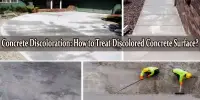Mastic is frequently used as a sealer and adhesive in construction projects. It is a type of sealant or adhesive used to close gaps and fill in seams, as well as to link various materials together. Mastic sealant is a common option when the region needs to be protected or when one surface needs to be bonded to another in a long-lasting way.
Almost any substance is adhered to with mastic sealant. The most frequent materials that it performs really well with include duct board, glass, aluminum, concrete, marble, and steel. It is frequently employed in building projects, such as joining windows to buildings. Additionally, it can be applied to domestic projects like caulking around bathtubs and patching up masonry cracks.
To keep them free of dust, mastic sealant is frequently applied to roofing, brick buildings, even cars and boats. Due to its resistance to UV rays, extreme temperatures, and water, mastic can be used outside. It can also withstand corrosion, making it appropriate for usage with metals.
There are a few things to keep in mind when using this liquid sealant, regardless of where the mastic coating is put. The area to be treated should typically be clean and dry, much like most sealants need, even though priming may not always be necessary. For maximum effectiveness, it should be checked and replaced after roughly five years, which is how long it typically lasts.
Examples of uses for mastic sealant include:
- Bonding ceiling, wall and floor tiles.
- Bonding plywood panels.
- As a joint-sealer for windows and doors.
- Sealing the area around bathtubs and other sanitary appliances.
- As a filler for cracks in masonry and concrete.
The best way to apply mastic sealant is normally with a caulking gun, and it is typically offered in either tubs or tubes. Mastic often resists some pressure when applied, but it is not flexible enough to allow for considerable movements. Due to its viscosity, it works better when applied to thick areas than thin ones, including wide gaps and cracks.
Features of Mastic Sealant –
- Mastic sealant is an all-purpose sealant used on a wide range of materials like aluminum, glass, marble, wood, plastics, ceramic, steel, etc.
- These sealants can be used to seal or bond two different materials. For example, it can bond wall tiles with a porcelain floor tile (or any other tile material) to minimize leaks.
- Mastic sealants are widely used in metal units as they are corrosion-resistant.
- These sealants can be used for outdoor projects as they are temperature, water, and UV-resistant.
- Mastic sealants can be applied on the surface right away without the need for primer.
- Mastic sealants are available in different varieties: for example, waterproof mastic, anti-mold sealants, window and door mastic sealants, etc. There are also universal mastic sealants by different manufacturers, which are used for multiple jobs.
- Mastic sealants are commonly used for the following applications:
- To bond the ceiling, wall, or floor tiles
- Joint sealers for windows and doors
- To seal the joint area around the bathroom fixtures and sanitary appliances.
- To fill the cracks in masonry and concrete
- To fill movement joints in the wall or floor tiles
- To bond plywood panels
- To seal the seams in an HVAC system where HVAC tapes can’t reach.
Advantages of Mastic Sealants –
- The application of mastic on a surface requires less preparation.
- It is used for both indoor and outdoor projects.
- They are flexible and elastic; hence are more durable.
- They are water-resistant and UV-resistant.
- Mastic sealants can join two different types of materials with ease.
- It has high corrosion resistance.
Mastic sealants or fillers cannot accommodate large movements. It is best suited for thick areas of application because to its viscous nature. Over the years, it has been applied as an adhesive in numerous construction projects. To fix floor tiles, clad panels, or fill gaps, use mastic sealant.
Due to its low weather ability and weak resistance to water intrusion, its use as a sealer has been restricted. Silicone mastic sealants are the most often used solution for sealing just about anything inside and out as a result of recent advancements in sealing technology, and they last for years.
















